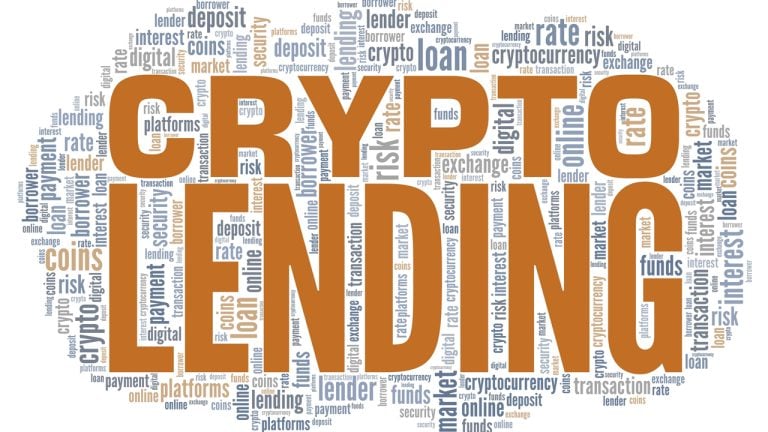 Decentralized finance (defi) has improved efficiency, inclusivity, and performance in consumer lending, but poor user experience remains a significant barrier to adoption, according to Thor Abbasi, co-founder of Zivoe. Abbasi argues that as long as wallet interfaces seem “unintuitive” or intimidating to non-crypto users, defi lending protocols won’t gain traction hence their benefits won’t be […]
Decentralized finance (defi) has improved efficiency, inclusivity, and performance in consumer lending, but poor user experience remains a significant barrier to adoption, according to Thor Abbasi, co-founder of Zivoe. Abbasi argues that as long as wallet interfaces seem “unintuitive” or intimidating to non-crypto users, defi lending protocols won’t gain traction hence their benefits won’t be […]
While some praised the move, others believe that it’s centralized and is adding NFTs where it’s not necessary.
A nonfungible token (NFT) collector shared the story of how a decentralized finance (DeFi) loan was collateralized through a luxury watch and was facilitated with an NFT representing the asset.
On July 11, pseudonymous DeFi project advisor CirrusNFT explained how a user was able to borrow $35,000 from another user by using an NFT that represented a physical item as collateral for the loan.
According to the exec, a user sent a Patek Phillipe luxury watch to 4K Protocol, an escrow firm that deals with NFTs backed by physical items. The company then sent back an NFT that represents ownership of the watch.

The NFT was then listed on the DeFi lending protocol Arcade. After listing the item, lenders pitched their offers to the borrower. The user then accepted the best loan offer they could find. Following this, the NFT was sent to an escrow wallet, where it would stay until the loan is paid in full or if the borrower defaulted. If the borrower fails to pay the loan, the NFT will be awarded to the lender. It can then be burned to claim the watch.
CirrusNFT explained that through this process, users can lend and borrow with complete anonymity. Lenders and borrowers do not need to submit their names to each other to go through the process. In addition, the executive believes that this allows people to have access to more global liquidity, which may offer more competitive rates.
Related: Blue chip collaterals help stabilize NFT lending: Paraspace
A community member expressed positive sentiments about the Web3 lending process, tweeting that the story piqued the interest of their dad, who called it “interesting.”

While some welcomed the new way of lending and borrowing, others believe that it’s very centralized and is adding NFTs where it’s not necessary.
Magazine: Web3 Gamer: GTA 6 crypto rumors, Dr Who/Sandbox, Thai tourist NFTs review
 Decentralized finance (defi) has continued to remain deeply ingrained in the cryptocurrency economy as the ecosystem provides users with a non-custodial way to exchange digital assets, lend cryptocurrencies, issue stablecoins, and ways to profit from arbitrage. In the lending sector of defi, a lot has changed during the last 12 months as lending applications like […]
Decentralized finance (defi) has continued to remain deeply ingrained in the cryptocurrency economy as the ecosystem provides users with a non-custodial way to exchange digital assets, lend cryptocurrencies, issue stablecoins, and ways to profit from arbitrage. In the lending sector of defi, a lot has changed during the last 12 months as lending applications like […] Following the governance vote that aimed to implement a semi-dynamic earn rate for the Anchor Protocol, the decentralized finance (defi) platform’s earn rate adjusted downward for the first time this month. After holding steady with a 19.4% annual percentage yield (APY) since the project started, Anchor Protocol’s earn rate is now roughly 18% APY for […]
Following the governance vote that aimed to implement a semi-dynamic earn rate for the Anchor Protocol, the decentralized finance (defi) platform’s earn rate adjusted downward for the first time this month. After holding steady with a 19.4% annual percentage yield (APY) since the project started, Anchor Protocol’s earn rate is now roughly 18% APY for […]
The Swiss firm will conduct all interactions with the Liquity smart contract on its clients' behalf but only a select few with over $500,000 on the platform will have access to the product.
Bitcoin Suisse has begun offering decentralized finance (DeFi) services to its clients with the addition of the Liquity protocol to its product lineup. It allows customers to post Ethereum (ETH) collateral in the protocol to mint and borrow the Liquity Dollar (LUSD) stablecoin.
In an announcement on April 20, Bitcoin Suisse said it will perform all smart contract interactions and system monitoring on its client’s behalf and allow the borrowed LUSD token to be exchanged into any fiat currency.
Bitcoin Suisse is a centralized crypto and financial services company founded in 2013 and based in Switzerland which offers services such as trading, custody, lending, and staking of cryptocurrencies to mostly institutional investors.
Liquity is a DeFi borrowing protocol launched in April 2021 which allows users to post Ethereum collateral into its smart contract and borrow its native LUSD stablecoin at a 0% interest rate. Liquity currently has over $1.1 billion in total value locked into its contract.
CEO of Bitcoin Suisse Dr. Dirk Klee said the firm was proud to take a “significant step” towards offering decentralized solutions to its clients:
“DeFi offers significant improvements over traditional financial services by being more open, more transparent, and more competitive.”
Launched as a pilot stage and Bitcoin Suisse says it’s only available to a select and “very small number” of its clients with the borrowing amount set above $500,000.
CeFi is making DeFi its new rails. This is just the tip of the iceberg. Keep an eye on this, people! https://t.co/YfB3Zg21Qk
— Ash (@ashleighschap) April 20, 2022
DeFi is becoming a particular interest to both the crypto sector and traditional finance with the current total value locked (TVL) across the ecosystem nearing $215 billion according to DeFi Llama, not far from its $254.8 billion all time high on December 2nd 2021.
Related: The many layers of crypto staking in the DeFi ecosystem
Centralized platforms are increasingly using DeFi infrastructure by either offering a central way to access decentralized services, or by backing their products with DeFi smart contracts or liquidity.
In March, Binance added functionality for use of the decentralized exchange (DEX) PancakeSwap from within the Binance app, integrating the DEX onto its centralized platform. In the same month it also launched an updated blockchain bridge, allowing assets to be bridged from any blockchain.
Australian based finance app Blockearner backs its “Yield Account” product promising a 7% APY with DeFi lending protocols Aave and Compound Finance, with users only having to deposit Australian Dollars which the app then stakes in DeFi on their behalf.
Bitcoin Suisse has long integrated crypto technology into its offerings, in November 2021 it was the first cryptocurrency payment processor in Switzerland to integrate the Bitcoin (BTC) Lightning Network in its effort to “promote the broader adoption of crypto technology.”
 On Thursday, the team behind the lending protocol Anchor announced that a proposal has passed and the decentralized money market will “implement a more sustainable semi-dynamic earn rate.” Following the announcement, the value of the protocol’s native token ANC slipped roughly 2% lower during the last 24 hours. Anchor Protocol Is Changing the Application’s Earn […]
On Thursday, the team behind the lending protocol Anchor announced that a proposal has passed and the decentralized money market will “implement a more sustainable semi-dynamic earn rate.” Following the announcement, the value of the protocol’s native token ANC slipped roughly 2% lower during the last 24 hours. Anchor Protocol Is Changing the Application’s Earn […] While the decentralized finance (defi) platform Anchor Protocol’s native digital asset ANC has gained more than 180% over the last month, the total value locked (TVL) in Anchor has increased a great deal during that time as well. Anchor Protocol is currently the second-largest defi lending platform in terms of TVL, and over the last […]
While the decentralized finance (defi) platform Anchor Protocol’s native digital asset ANC has gained more than 180% over the last month, the total value locked (TVL) in Anchor has increased a great deal during that time as well. Anchor Protocol is currently the second-largest defi lending platform in terms of TVL, and over the last […] As defi continues to expand, it risks embracing the very ideology it initially sought to reject as the primary beneficiaries of this new financing paradigm are those who already own digital assets. Replacing Intermediaries Doesn’t Directly Improve Finance When it comes to financial products and solutions, almost everything comes with a catch, be it exceptional […]
As defi continues to expand, it risks embracing the very ideology it initially sought to reject as the primary beneficiaries of this new financing paradigm are those who already own digital assets. Replacing Intermediaries Doesn’t Directly Improve Finance When it comes to financial products and solutions, almost everything comes with a catch, be it exceptional […]
B.Protocol says v2 will optimize liquidations of “big debt” with significantly smaller capital requirements on decentralized finance lending platforms.
Decentralized finance service B.Protocol has announced plans for a new version that will improve the liquidation of undercollateralized loan positions on lending platforms.
In a release issued on Tuesday, the backstop liquidity protocol for DeFi lending platforms revealed that the upcoming v2 is based on a white paper for a novel Backstop automated market maker (B.AMM) written by a couple of anonymous community members.
According to a blog post published by B.Protocol founder Yaron Velner the v1 design that utilized professional liquidators to share profits with users instead of miners was not sufficient to tackle the capital inefficiency problem.
Unlike centralized exchanges like Binance that offer leveraged trading up to 100 times user deposits, the leverage ratio on decentralized exchanges (DEX) rarely exceeds five times. This significantly lower leverage limit is despite the massive liquidity pool available to DEX platforms.
For Velner and the B.AMM white paper authors, the poor leverage limit on DEXes forces lending platforms to be conservative with their loan collateral factors. Indeed, with high slippage and tight spreads on AMMs like Uniswap and SushiSwap, liquidation on DeFi lending platforms appears restricted to flash loan arbitraging.
DeFi lending platforms like Maker utilize a system of market-maker-keeper (or keepers) responsible for, among other functions, executing liquidations. These keepers have been the focus of scrutiny during black swan events like Black Thursday back in March 2020.
However, as previously reported by Cointelegraph earlier in June, DeFi liquidation mechanisms generally performed well amid a “tsunami of liquidations in May.”
B.Protocol’s solution to the problem is in the form of a platform that allows users to provide liquidity for possible liquidations — debt repayment in return for collateral — via an automatic rebalancing protocol that converts collateral for debt repayment.
According to Velner and the B.AMM white paper, the rebalancing process will be based on the Curve Finance stable swap invariant for asset pricing. While the stable swap invariant is designed for correlated asset pairs like Dai (DAI) and Tether (USDT), B.Protocol v2 will expand it for uncorrelated pairs like DAI and Ether (ETH).
In a conversation with Cointelegraph, Velner explained how the stable swap invariant will be expanded to work for uncorrelated asset pairs on B.Protocol v2:
“The system is designed specifically for non-correlated assets. This is possible because the system relies on an external price feed (e.g., Chainlink). The Curve Finance's stable swap invariant is only used to determine the discount in the rebalance process.”
Related: Cointelegraph Consulting: DeFi hit by a tsunami of liquidations in May
By using an external price feed like Chainlink, B.Protocol asset pricing can be generalized in U.S. dollar terms.
According to the B.AMM white paper, the proposed high leverage DeFi liquidation platform can handle liquidation of up to $1 billion per month. The announcement also revealed that DeFi lending platforms can increase their collateral factors by up to four times on the B .Protocol v2.
Apart from the potential to increase collateral factors for DeFi lending, Velner also told Cointelegraph that the team ran simulations on the protocol during the volatile periods in May with the results showing substantial yields for users.